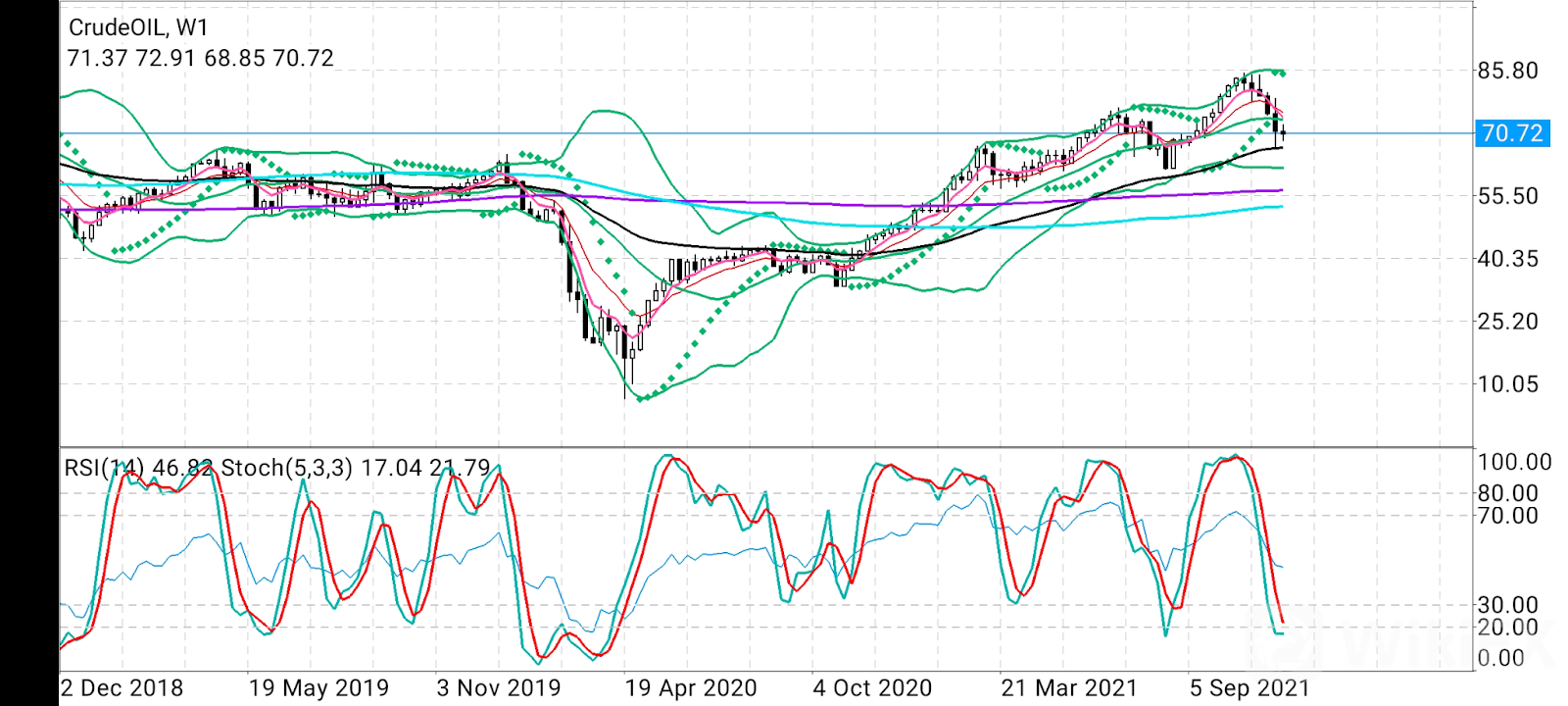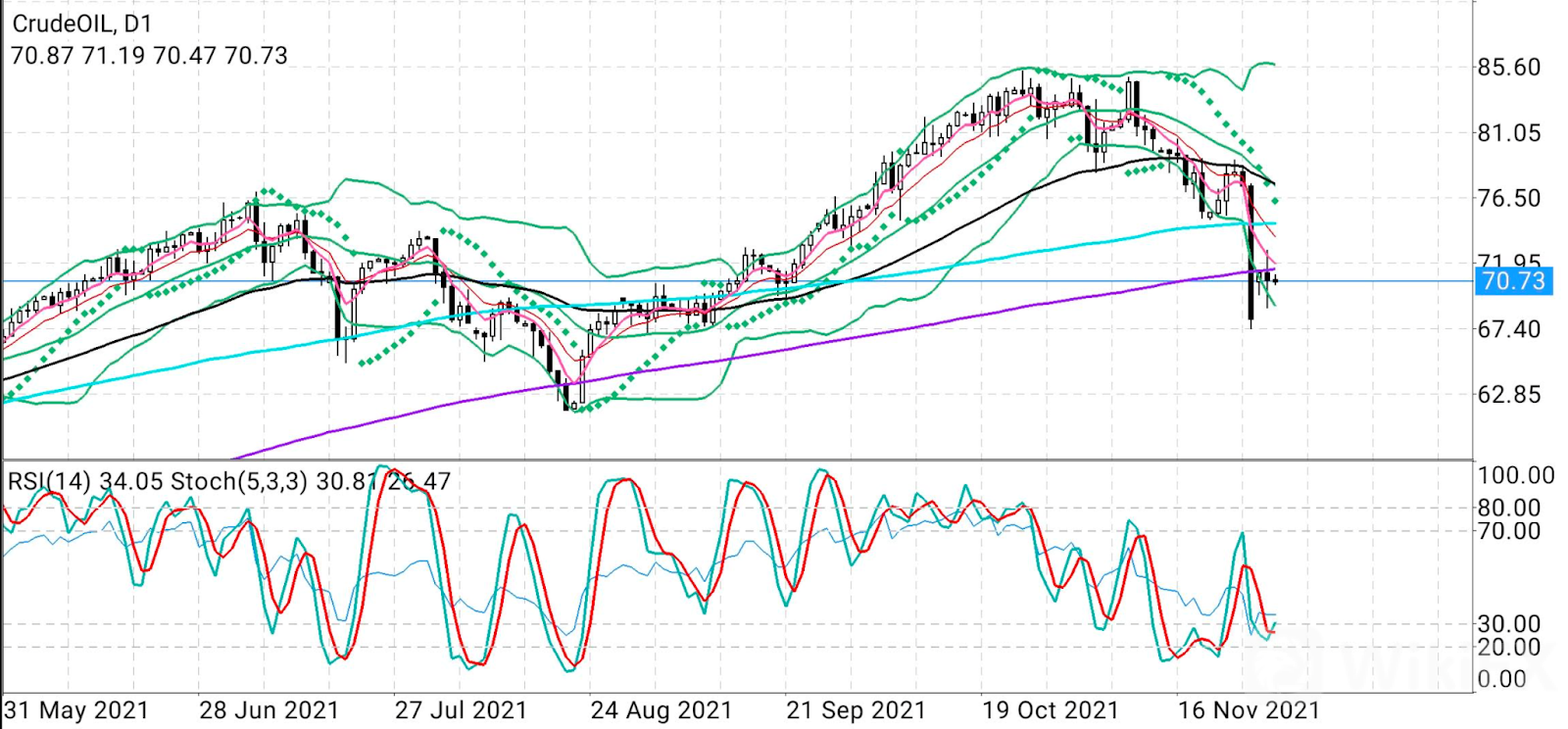Its the answer every oil trader is seeking, yet will likely get with only a certain degree of accuracy.
With about two days left until the all-important ministerial meeting of OPEC+, few things are more crucial than figuring out where oil will be trading before the world alliance of oil producers lays down its policy decisions for December.
Dozens of ideas abound on crude prices over the next 48 hours, with as many theories on why they should be so.
What Do The Fundamentals Show?
Just a month ago, there were few vagaries in predicting the course of the US West Texas Intermediate benchmark for crude oil, or that of its peer, London-traded Brent. With OPECs seemingly invincible control of the supply-narrative, prices only pointed one way: up.
Then came the first-ever coordinated crude reserves release by the United States and other major oil consuming countries in an attempt to beat back prices trading near seven-year highs. That was followed by caution from the International Energy Agency that oil could be oversupplied by the first quarter of 2022.
Last weeks panic selling in oil, triggered by worries about the potential hazards of the Omicron variant of COVID-19, provided the perfect storm for those long the market.
While crude prices initially rose 5% on Monday, at the close they only managed to recoup about 3% of Fridays 12% collapse—which marked the worst one-day decline for WTI since April 2020.
As this article was being crafted—at around midnight in New York (0400 GMT) when Asian markets headed for their Tuesday lunch hour—WTI was up another 1% at $70.63 a barrel. But in the broader scheme of things, it was still some $15 or 18% lower than seven-year highs of above $85 per barrel reached in mid-October. (Editor's note: however, at time of publication crude had reversed lower, once again falling below the $70 level.)
Many are betting that OPEC+ will steady the ship again by the time it meets Thursday, firstly by calling off the incremental 400,000 barrels per day it has pledged over the past few months.
“We think the group will lean towards pausing output hikes in light of the Omicron variant and the oil stockpile release by major oil consumers,” Commonwealth Bank commodities analyst Vivek Dhar said in a note.
OPEC+ bigwigs—Saudi Energy Minister Abdulaziz bin Salman and his Russian counterpart Alexander Novak—have said they weren‘t unduly worried about Omicron’s impact on oil despite initially postponing a technical meeting of the alliance to learn a little more about the strain.
Some said Abdulaziz, in his usual combative style, could even threaten to squeeze the market as much as is needed to get it back to $80 a barrel.
“Following the global strategic reserve releases and the announcement of dozens of countries restricting travel to and from South Africa and neighbouring nations, OPEC and its allies can easily justify an output halt or even a slight cut in production,” OANDA analyst Edward Moya said in a note.
Yet, some think the selloff in oil could get worse before things get better.
“Two more weeks of volatility ahead,” Samir Madani of tankertrackers.com predicted in a tweet.
What Do The Technicals Say?
Slobodan Drvenica of Windsor Brokers said WTIs drop to a three-month low of $67.38 on Friday had retraced 76.4% of the $61.81/$85.39 upleg, generating a bearish signal on a weekly close below $70 on the 200-Day Moving Average.
“Recovery is still holding below the base of thickening daily cloud ($73.59) that keeps near-term bias with bears and risk of renewed probe below $70 in play,” Drvenica wrote in a Tuesday post that ran on fxstreet.com.
Only a bounce through to the $74.00/$75.00 zone—breaching the 100-Day Moving Average and former low of Nov. 22—would ease the current bearish pressure and allow for a stronger upward correction, Drvenica added.

Oil Weekly
All technical charts courtesy of skcharting.com
Sunil Kumar Dixit of skcharting.com said WTIs weekly chart shows a break below the middle Bollinger® Band of $74.80 that has pushed the US crude benchmark to find support at the 50-week Exponential Moving Average of $67.25.

Oil Daily
Dixit said WTIs stochastic reading of 16/21 was approaching oversold territory, indicating potential sideways action within a range of the 50-week EMA of $67.25 and the middle Bollinger Band of $74.10.
“Going forward from here, prices holding above $67 can cause sideways action, with some recovery to retest $71.20, $72. 50 and $74.50,” said Dixit, a regular contributor of commodity technicals to Investing.com.
Jeffrey Halley, another analyst for OANDA, had a neutral view on oil pre-OPEC, although he agreed with Dixit that any test of the highs could be capped at $77 for Brent and $74 for WTI.
“Rather than second-guessing OPEC+, I am content to watch from the side-lines from here, as oil markets will be more vulnerable than most Omicron headlines and violent swings in sentiment,” Halley wrote in a commentary published Tuesday.
“Heightened volatile means that long or short, your P and L can still be nought.”
That said, the respective 200-DMAs at $72.70 and $70.00 a barrel for Brent and WTI “should provide some support, if for no reason that a fall to those points will send the relative strength indexes (RSIs) into oversold territory,” he wrote.
“Above, some resistance should be found at $77.00, and $74.00 a barrel respectively,” he added.
Leave a Reply